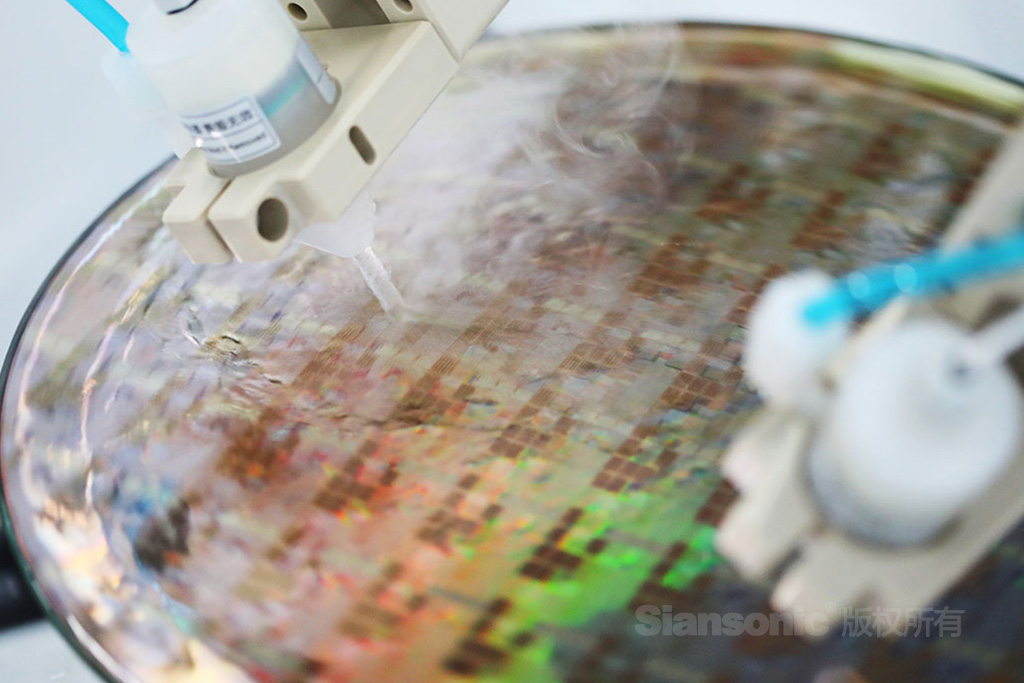The copyright of this article belongs to Siansonic Technology.The production is prohibited without permission.
Both megasonic cleaners and ultrasonic cleaners use high-frequency sound waves to effectively remove contaminants from objects. The difference between them is that megasonic waves are ultrasonic waves at a higher frequency. There is a significant technical barrier between ultrasonic cleaning and megasonic cleaning. Thus, cleaning technologies in different frequency ranges are generally distinguished as "ultrasonic cleaning" and "megasonic cleaning". Let's now discuss in detail how a megasonic cleaner works.
Generally, a megasonic cleaner primarily comprises three components: a megasonic generator, a cleaning tank, and a megasonic transducer placed in the cleaning tank. First, the megasonic generator produces an electrical signal at a specific frequency and power. This signal is then transmitted to the megasonic transducer, which converts electrical energy into mechanical energy in the form of high-frequency vibrations. These vibrations propagate through the liquid in the cleaning tank, ultimately achieving the cleaning effect. When high-frequency mechanical vibrations propagate through a liquid, they generate tiny bubbles through a process known as cavitation. This is referred to as the cavitation effect of ultrasound, which is a key scientific basis for megasonic cleaning. The formation of these tiny bubbles is due to the low-pressure areas created as ultrasonic waves propagate through the liquid, causing the liquid to boil and form bubbles. These bubbles grow as the pressure continues to drop, until they can no longer maintain their structure and collapse and implode under their own weight. This process generates high-pressure waves that peel off and remove dirt from the surface of the object being cleaned.

Figure 1.Siansonic's shower type megasonic cleaner
The megasonic generator plays a crucial role in controlling the frequency and power levels of the megasonic cleaner. The frequency of the sound waves determines the size and intensity of the bubbles produced in the cleaning fluid through the cavitation effect. Lower frequency sound waves produce larger bubbles through cavitation, which generally have higher energy and are suitable for cleaning items that are severely contaminated. Higher frequency sound waves produce smaller bubbles with lower energy, which are gentler. They are suitable for more delicate cleaning applications and are more effective in avoiding damage to the items being cleaned. Therefore, "megasonic" is generally gentler compared to "ultrasonic." Devices that may be damaged by strong cavitation effects are better suited to "megasonic cleaning".
The power ultimately determines the intensity (amplitude) of the ultrasonic waves produced by the ultrasonic transducer. Higher power means more energy can be transferred to the cleaning fluid, enhancing the cavitation effect and improving cleaning efficiency. However, higher power also leads to more heat generation, which increases the likelihood of damage to the items being cleaned. Therefore, care must be taken in selecting and adjusting both frequency and power to maximize cleaning efficiency and avoid damage to the items.
Siansonic Technology, specializes in the field of megasonic cleaning, providing comprehensive solutions including megasonic cleaners to semiconductor manufacturers both in China and abroad